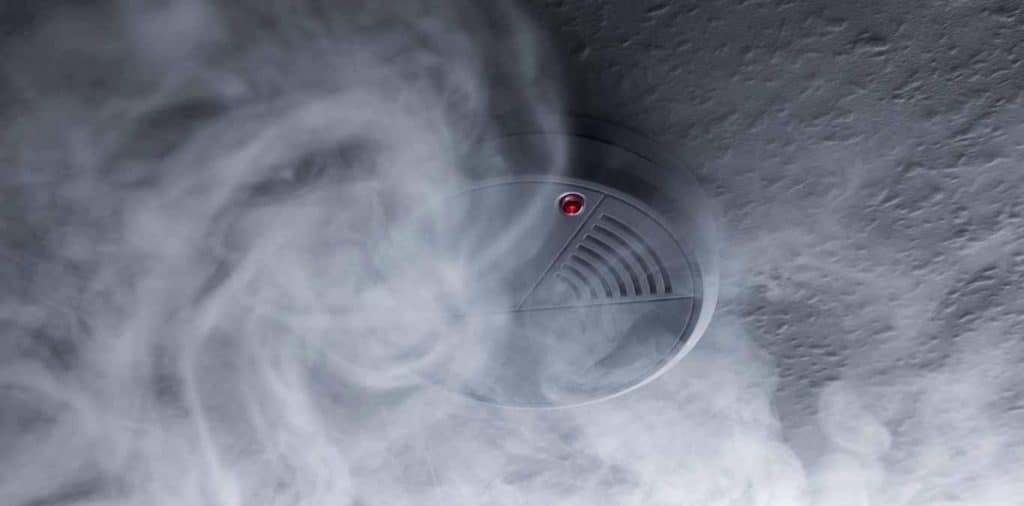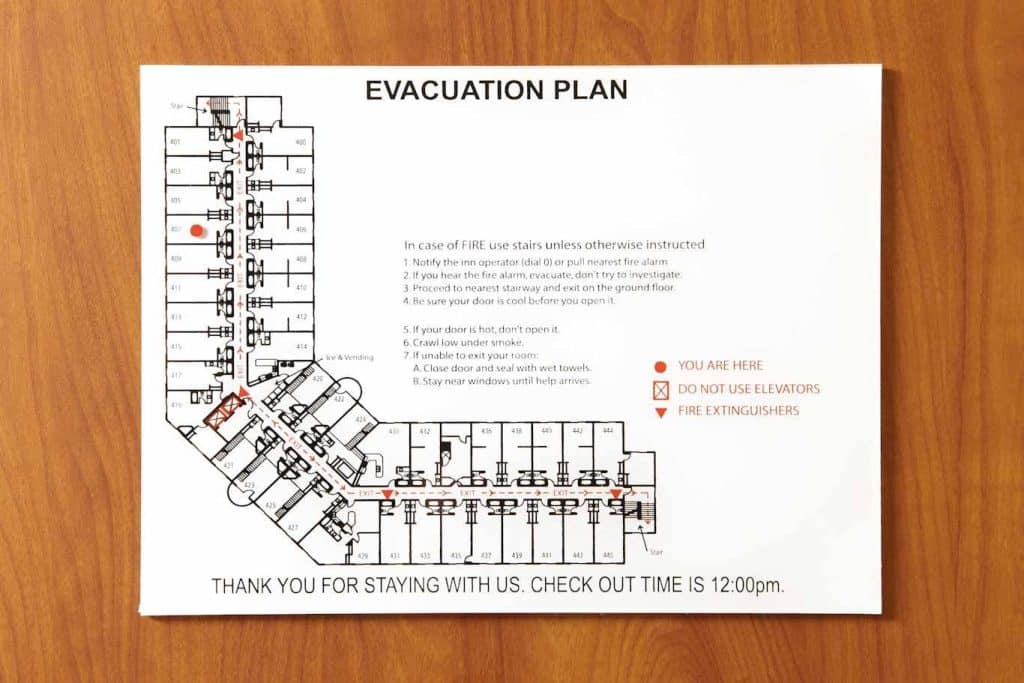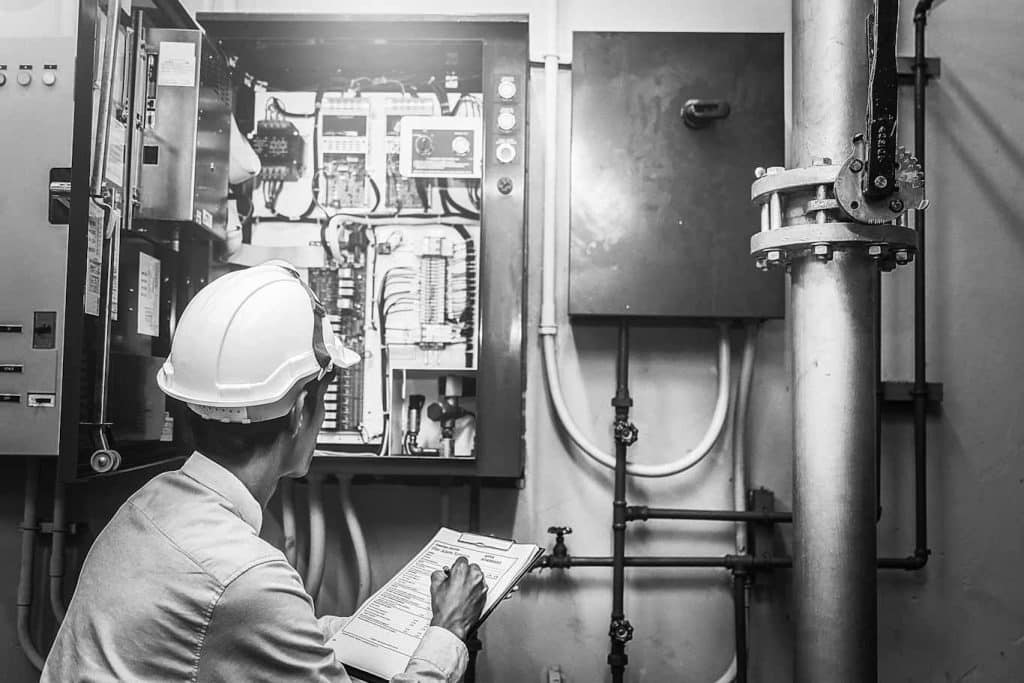
Reporting building fire incidents can be a frightening situation for even the most experienced team member. Luckily, with a robust fire prevention training program, you can rest assured that your staff knows the right thing to do at the right time. But why not make that entire situation less stressful and more effective?
When reporting building fire incidents at your hotel or other business forms, there are several factors to consider for maximum immediate safety and long-term prevention strategies success. We’ll dive deeply into the eight strategies, five tips, and some best practices mixed in for your business regarding fire incidents and the proper documentation that needs inclusion in the process.
An interesting study was conducted and documented by Richard Campbell of the National Fire Protection Association (NFPA) that noted that fire departments in the United States responded to over 3,500 fire fires in hotels annually between 2009 and 2013. The numbers haven’t changed much since then. That constitutes approximately 1% of all fires in the US. A relatively high percentage for a single building type. (source)
Like many other industries, the need for solid fire preventive measures in the hotel industry is apparent. The same study mentioned above also showed that those fires in hotels also caused annual losses of:
- 9 civilian deaths
- 120 civilian injuries
- $84 million in direct property damage
These figures show that it’s all the more reason to address the proverbial elephant in the room. And in this case, almost 50% of the time the cause is kitchen fires within the hotel. However, according to the same study, fires in hotels that cause deaths are also attributed to smoking.
We can see the need and desire to prevent loss of property, damage, and, quite obviously, the loss of life, so let’s talk more about some of the best strategies you can incorporate into your business to fight these hot threats.
8 Strategies For Building Fire Incidents Prevention
- Maintain A Thorough Emergency Response Plan
- Train, Retrain, And Refresh Staff
- Utilize The Best Fire Prevention Equipment For Your Facility
- Follow The Code Plus 10%
- Engineer Your Fire Prevention
- Post A Clear Evacuation Plans
- Host Regularly Scheduled Fire Drills
- Maintain And Test All Fire Prevention Equipment Regularly
Maintain A Thorough Emergency Response Plan
The best way to fight fire is with a well-prepared emergency response plan.
It’s better to be safe than sorry, and if you don’t have an emergency response plan in place now, it may be too late when the time comes. It’s essential that all employees know what is expected to do in case of a fire or other disaster (and I’m not talking about how to use the extinguisher).
Train, Retrain, And Refresh Staff
One of the most critical aspects of fire prevention is to train employees on what to do in case a fire occurs. Keep your staff up-to-date by providing regular training sessions, conducting drills, and reminding them about emergency procedures at least once yearly.
You should also ensure that anyone with access to the building has completed an emergency response plan for their job or task. It process will help reduce any panic during an emergency.
Utilize The Best Fire Prevention Equipment For Your Facility
It’s not enough to have the best fire prevention equipment for your facility, you need to know how and when to use it. That means you need to understand the different types of fires, alarms, fire suppression systems, and other required technologies to mitigate a fire-borne disaster.
Fire is a complex beast. Depending on the type of fuel that’s burning, fire can either be fast or slow, aggressive or tame, and suppression systems need to be designed with this knowledge in mind to help reduce damage to your facility.
Understand how you can use a fire suppression system, alarms, and other secondary systems. We can all note what happened during the natural weather disaster that struck Texas in early 2021.
A hotel in Killeen, Texas, suffered a massive fire because the sprinkler system had frozen pipes and could not do its job suppressing the fire. Luckily, no tenants were hurt despite the full house of 102 booked rooms. The ongoing cold temperatures had displaced so many from their homes, who now had to evacuate the hotel due to this fire after evacuating their freezing homes. (source)
Follow The Code Plus 10%
As we all know, a building code violation is a serious offense. You need to follow the building code, or else you may get in trouble with building inspectors.
But it’s not enough to follow building codes—you should always do 10% more than what is required by law. For example, if the building code needs lights in stairwells and hallways, go ahead and add some light fixtures for good measure! Follow the building code plus at least 10% more; your business will be much safer from fire incidents!
Engineer Your Fire Prevention
If your hotel or business is incorporating renovations, consider utilizing fire-retardant building materials – especially for kitchen areas. Using these sorts of materials is especially helpful for companies that are having building renovations done.
These building materials help the building’s infrastructure and make it easier to report building fire incidents in the case of an incident. These materials will slow the spread of flames and cause a building fire incident to last less time, allowing people in the area to escape to safety with a slightly larger window of opportunity.
Post A Clear Evacuation Plan

Any business, hotel, or another type with staff, contractors, clients, or guests on-site needs to let those people know where to evacuate in case of fire (or other emergencies).
It’s common sense for people to neglect a fire escape route when shopping or staying at a hotel because the general public assumes the business has the necessary equipment to mitigate these sorts of emergencies.
However, as you and I both know, people will still need to be evacuated when the alarm system does its job and proclaims an emergency. So, whether you’re running a hotel or a manufacturing plant, you need to post clear evacuation plans throughout the facility.
Check with local legislation to ensure you’ve complied with the minimum safety requirements concerning posting evacuation routes. Most businesses like hotels will post evacuation plans as a simple map showing the exits in case of fire or another emergency. These maps typically should be mounted in conspicuous areas and on every floor of your facility.
Old School Tip: Post A Poster On Fire Prevention And Safety Tips
It would be best if you drove home the importance of building fire prevention by getting into your client’s heads (and employees, and tenants’ heads) with a building poster campaign.
Admittedly, posters are an old-school method, but they still work great today – especially in building management. Don’t be afraid to put up a fire awareness poster, including an escape plan, so people know when it comes to fire – you mean business!
Host Regularly Scheduled Fire Drills
Hosting a regular fire drill as a part of your business’ operational schedule is not only wise; it’s required by law.
Any building or structure with staff, contractors, clients, or other people on-site should conduct fire drills at least once a week to ensure all parties know their designated building evacuation paths and escape routes.
You can conduct drills with or without the alarm system sounding an alarm – but you must do so regularly.
Check with your local authorities to determine the frequency required in your jurisdiction.
Maintain And Test All Fire Prevention Equipment Regularly

Make sure you can fight a fire effectively – with the right tools and equipment in place.
You need the ability to extinguish building fires quickly. Therefore you should consider fire-fighting equipment that can suppress various building emergencies within your facility.
Fire-fighting equipment is only helpful if people know how to use it properly and effectively, so ensure you provide adequate building training to your staff.
Tips For Reporting And Analyzing Fire Incidents In Your Business
So what happens if you do everything right, but there’s still fire? Many things could cause a fire, from a faulty cell phone battery to a faulty plug in the wall. Or a client breaking the rules by smoking in their hotel room could even be a cause. No matter the reason, and no matter what we do, these things still find a way to happen. And when they do, you need to respond, but you also need to document.
Documenting fire incidents is the only way to learn from the experiences genuinely. With human memory becoming more cloudy, jaded, and unreliable over time, building fire incidents must be documented as fast as possible without hindering the reactions necessary to battle a fire.
- Include As Much Information As Possible
- Detail Events That Lead Up To The Fire
- Use A Digital Reporting System
- Analyze The Data With Reports
- Find The Weak Links And Promote Corrective Action
Include As Much Information As Possible
The building fire incident report should include as much information about the building, building occupants, building alarm system, and other building systems as possible. It should include:
- Location of the building (street address and building number)
- Details about the fire (size, type, fuel sources)
- Date and time of the fire
- Name of building manager for this property
Detail Events That Lead Up To The Fire
One building fire worth considering when detailing precursor events that led to the building fire is the Cocoanut Grove nightclub in Boston, Massachusetts. The fire claimed 492 lives. (source)
Someone covered the building’s windows with an untreated cotton curtain material. Over time, this material deteriorated, and it caught on fire in a bustling event with overcrowding.
Events like this are historical lessons. We can all learn a powerful lesson by analyzing what we know of the event. And a detailed report of why the fire spread so quickly is precisely why today we know that certain drapery requires special treatment or replacement over time.
Other factors may cause us to learn things about our facility, like the speed at which installed carpeting might catch fire. Any incident, even a minor burn, can help you determine the best course of action if properly documented.
Use A Digital Reporting System
If your building is of any size, we highly recommend using a digital reporting system like 1st Incident Reporting. This type of software is perfect for building fire incident reporting because it includes many automation and customization features that you can use for other tasks like reporting.
To report building fire incidents effectively, you need a tool that can allow you to gather information and compile it in one place. That information might be in the form of a video, a checklist, a custom audit form, or in this case, a customized building fire incident form or template.
The software is downloadable from Google Play and The Apple App Store and works on nearly every device. The automation features include notifications that let you automate notifications when a particular report is completed.
Customization allows you to expand on any of the pre-built templates included with the app or lets you create your own with the easy-to-use customizer.
Analyze The Data With Reports
When we analyze data collected, the result often reveals truths about the origins of an incident. For example, The same study referenced at the beginning of the article by Richard Campbell of the NFPA mentioned how 41% of hotel fires originate in the kitchen. (source)

Only when we can adequately analyze multiple reports can we genuinely paint a picture of a repeated incident’s cause. This is also why using a digital reporting system like 1st Incident Reporting is smart. Having to sift through paper-based reports and documents can take valuable time. A digital reporting system can take time to set a few parameters or click a few buttons. It’s a much more convenient practice for managers lacking time to sift through paperwork.
Find The Weak Links And Promote Corrective Action
Knowing that most hotel fires originate in the kitchen, we can use this information to establish new practices that aim to reduce the risk of this sort of incident in your hotel or other types of business.
Using available statistical data and your business history of incidents, you can craft a clear response plan to help strengthen any weaknesses in your systems.
Finding these weak links isn’t always easy; often, it can be like looking for a needle in a haystack – especially if your reports are all manually written documents residing in filing boxes in a back storage room.
That’s where a reporting application like 1st Incident Reporting is the best choice for mobile building fire incident reporting and any other type of mobile form automation your business requires.
Speaking of mobile form automation, let’s take a look at what’s a hot trend in the world of hotel mobile report management.
Mobile Form Automation And The New Method Of Documentation
Mobile form automation is a new and hot trend in the technology sector. This trend can help you run a more effective operation utilizing common modern technologies and data capture organized in a new and automating way.
When you take customizable form builders and add automation for things like notifications (also customizable), then you’ve got one powerful solution that can be used for many aspects of your business:
- Automating on-site training, reporting, auditing, inspecting, or other procedures.
- Automating staged protocol or processes.
- Triggering secondary automation protocols via customized notifications.
- Reporting incidents of any type and collecting the data in a safe, cloud-based environment
- Creating complete reports, including audio, video, text, images, and more, to achieve ultimate comprehensive reporting program practices.
- Automate communications based on report stage events.
The end result of using a system that helps automate traditional processes is something that is more valuable than most businesses consider – it saves time. Do you want to save time and improve efficiency within your business?



